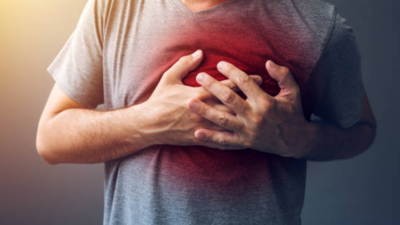- News
- lifestyle
- health-fitness
- health-news
- How Shakira's 'Hips Don't Lie' song can save your life, explains American Heart Association
Trending
How Shakira's 'Hips Don't Lie' song can save your life, explains American Heart Association
The American Heart Association reveals the beats per minute of popular songs like Shakira's 'Hips Don't Lie' and Beyonce's 'Riiverdance' suitable for Hands-Only CPR, emphasizing the importance of immediate CPR in cardiac arrest emergencies.

Social media never fails to surprise us. Let's discuss one such interesting post.
A recent post by the American Heart Association is the perfect example of how social media is an unmatchable platform for every genre of content.
The American Heart Association (AHA), a nonprofit organization in the United States that funds cardiovascular medical research, has shared that Shakira's famous song 'Hips Don't Lie' has 100 beats per minute, the right tempo for Hands only CPR.
"You knew it was a beat to move your hips to. Now you know it’s a beat to save a life too.
Hands-Only CPR can double or triple a cardiac arrest victim’s chance of survival. If you see a teen or adult collapse, call 911, then push hard and fast in the center of the chest," it has captioned the post on Instagram.
In another post, it has also mentioned about Beyonce's Riiverdance song, which it says has 120 beats per minute, the right tempo for hands-only CPR.
In a series of posts, the AHA has discussed popular songs like 'The Tortured Poets Department' by Taylor Swift, '360' by Charli xcx.
Importance of CPR
Cardiopulmonary resuscitation (CPR) is a life-saving technique essential in emergencies such as cardiac arrest, where the heart stops beating. Immediate CPR can double or triple the chances of survival by maintaining vital blood flow to the brain and other organs until professional medical help arrives. This intervention is crucial because, during cardiac arrest, each minute without CPR reduces survival chances by about 10%.
Heart failure in men and women: Understanding the differences in symptoms
CPR combines chest compressions and rescue breaths to mimic the heart's pumping action and deliver oxygen to the lungs. By doing so, it helps preserve brain function and keep the body's systems functioning. This technique is vital not only in saving lives but also in preventing severe brain damage, which can occur within minutes of the heart stopping.
CPR is an accessible skill that can be performed by anyone trained in its basics, making it a critical component of community health and safety. Training more people in CPR increases the likelihood of bystander intervention during emergencies, significantly improving outcomes for cardiac arrest victims.Widespread CPR training and awareness can create a safer environment and empower individuals to act effectively in life-threatening situations.
How to perform CPR safely?
End of Article
FOLLOW US ON SOCIAL MEDIA









